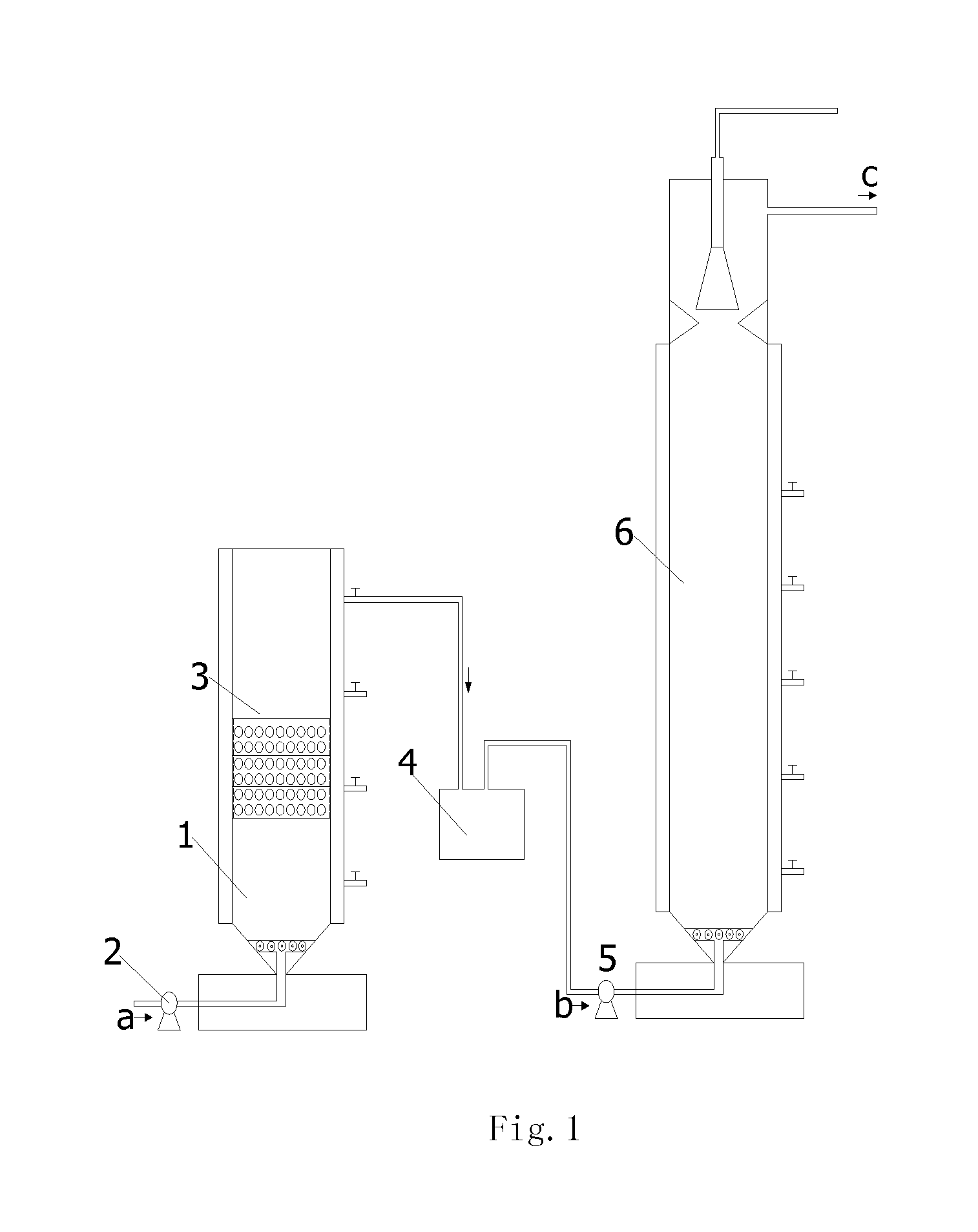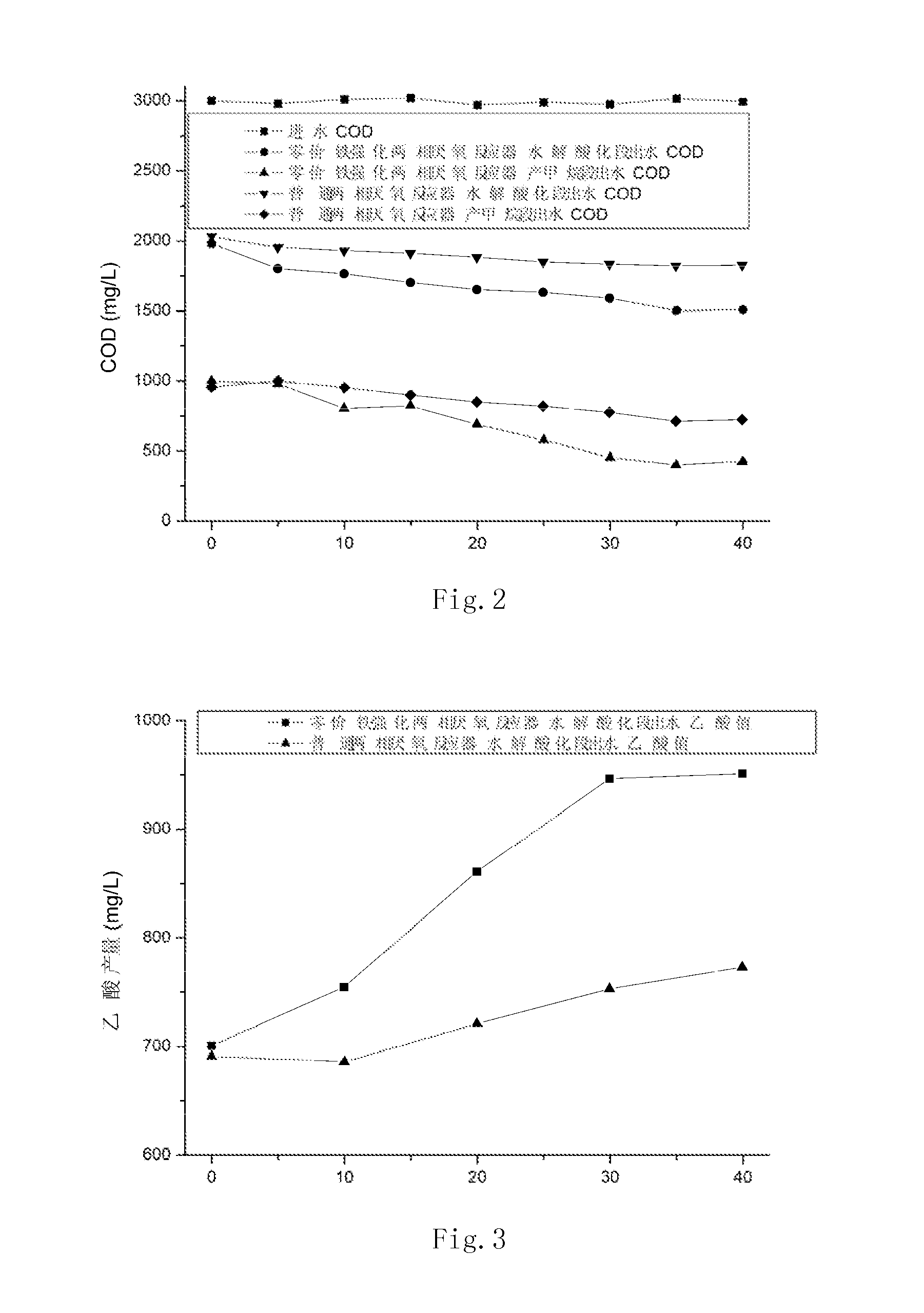Zero-valent iron two-phase anaerobic reactor
a two-phase anaerobic reactor and zero-valent iron technology, applied in biological water/sewage treatment, separation processes, filtration separation, etc., can solve the problems of difficult treatment of effluent, a large risk to the environment and human health, and the anaerobic process is susceptible to the operation conditions
- Summary
- Abstract
- Description
- Claims
- Application Information
AI Technical Summary
Benefits of technology
Problems solved by technology
Method used
Image
Examples
Embodiment Construction
[0019]FIG. 1 is a structure diagram for the invention of a two-phase anaerobic reactor enhanced by ZVI. The device mainly consists of a cylindrical anaerobic hydrolysis acidification reactor 1 whose shell is made of plexiglass with an inner diameter of 10 cm and a height of 25 cm. Its working volume is 1.8 L. After entering the anaerobic hydrolysis-acidification tank 1 by inlet pump 2, sewage flows through ZVI filling layers 3. Then the effluent flows into the middle tank 4, and then was pumped (5) into the anaerobic methanogenesis tank 6 with an inner diameter of 10 cm, a height of 100 cm. Its working volume of 7.5 L.
[0020]The working process of the coupling reactor is as follows: At first, sewage A goes into the bottom of the anaerobic hydrolysis acidification tank 1 through the inlet pump 2, fully contacting with organisms in the sludge during the sewage rise process, then passing ZVI filling layers 3 and entering middle tank 4, finally flowing into the anaerobic methanogenesis t...
PUM
| Property | Measurement | Unit |
|---|---|---|
| size | aaaaa | aaaaa |
| height | aaaaa | aaaaa |
| inner diameter | aaaaa | aaaaa |
Abstract
Description
Claims
Application Information
 Login to View More
Login to View More - R&D
- Intellectual Property
- Life Sciences
- Materials
- Tech Scout
- Unparalleled Data Quality
- Higher Quality Content
- 60% Fewer Hallucinations
Browse by: Latest US Patents, China's latest patents, Technical Efficacy Thesaurus, Application Domain, Technology Topic, Popular Technical Reports.
© 2025 PatSnap. All rights reserved.Legal|Privacy policy|Modern Slavery Act Transparency Statement|Sitemap|About US| Contact US: help@patsnap.com



